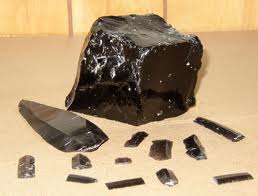- Latest Archaeology Updates
- Importance and applicability
- Famous Archaeologists
- Museums Collections
- Site Map
- World Heritage Sites
- World History Monuments
- Archaeological Organizations
- World Atlas of Archaeology
- Forensic Investigation and Geophysics
- Contact Us
- Movies based on Archaeology
- Frequently Asked Questions
- Archaeological discoveries
- Tell a Friend
- Archaeological Abbreviations
- Gallery Collections
- Famous-Museums site map
- Famous-archaeologists site map
- Archaeological Monuments site map
Archaeological science Archaeological science, also known as archaeometry, consists of the application of scientific techniques to the analysis of archaeological materials. Archaeometry is now considered its own scientific field. The UK's Natural and Environmental Research Council provides funding for archaeometry separate from the funding provided for archaeology.Archaeological science involves dating and studying ancient materials. It is related to methodologies of archaeology.
The problem is that ancient records do not cover all topics equally. Literacy was often preserves upper classes, such as the clergy and aristocracy. The general population made few records of there own, those made less likely to be preserved. The literate classes were, understandably, primarily concerned with recording their own interests. Many topics of interest to recent scholars such as economic history and religious history were widely taken for granted and not described in records.
Not all records that were written in antique have been preserved. Much of the knowledge of the Roman Empire was vanished during the early on Middle Ages, before Europe took a renewed interest in its ancestors. In addition, many of the ancient records that have survived are not primary sources. For example, the works of Cristobel's, the historian who accompanied Alexander the Great on his campaigns, were mostly destroyed within a few centuries and supplanted by the writings of later scholars who used him as a source.
Finally, written sources are not always truthful. Those who write about history usually have some personal involvement in that, and they may to bend the truth to cast them in a more positive light. On the other hand, it is practically impossible to systematically distort the archaeological personal involvement in that, and they may to distort the truth to cast themselves in a more positive light. On the other hand, it is practically impossible to systematically distort the archaeological record so as to imply events that never occurred.
Archaeological science can be divided into the following areas:
- Physical and chemical dating methods which provide archaeologists with absolute and relative chronologies
- Artifact studies
- Environmental approaches which provide information on past landscapes, climates, flora, and fauna; as well as the diet, nutrition, health, and pathology of people
- Mathematical methods for data treatment (also encompassing the role of computers in handling, analyzing, and modeling the vast sources of data)
- Remote-sensing and geophysical-survey applications comprising a battery of non-destructive techniques for the location and characterization of buried features at the regional, micro-regional, and intra-site levels
- Conservation sciences, involving the study of decay processes and the development of new methods of conservation
Archaeometry has greatly influenced modern archaeology. Archaeologists can obtain significant additional data and information using these techniques, and archeometry has the potential to alter the understanding of the past. The so-called "Second radiocarbon revolution" provides a good example of such alteration: it significantly re-dated European prehistory in the 1960s (the first radiocarbon revolution involved the original introduction of the method to archaeology from 1949). Some scholars are pressing all graduate programs in archaeology to include a survey course in archaeometry.
Archaeological science has particular value when it can provide absolute dates for archaeological strata and artifacts.
Some of the most important dating techniques include:
- Radiocarbon dating — especially for dating organic materials
- Dendrochronology — for dating trees; also very important for calibrating radiocarbon dates
- Thermoluminescence dating — for dating inorganic material (including ceramics)
- Optically stimulated luminescence (OSL)/optical dating — for absolutely dating and relatively profiling buried land-surfaces in vertical and horizontal stratigraphic sections, most often by measuring photons discharged from grains of quartz within sedimentary bodies.
- Electron spin resonance, as used (for example) in dating teeth
- Potassium-argon dating — for dating (for example) fossilized hominid remains
Another important subdiscipline of archaeometry is the study of artifacts. Archaeometrists have used a variety of methods to analyze artifacts, either to determine more about their composition, or to determine their provenance.
These techniques include:
- X-ray fluorescence (XRF)
- Inductively coupled plasma mass spectrometry (ICP-MS)
- Neutron activation analysis (NAA)
- Scanning electron microscopy (SEM)
- Laser-induced breakdown spectroscopy (LIBS)
Archaeometry is also very helpful in finding potential dig sites. The use of remote sensing has enabled archaeologists to identify many more archaeological sites than they could have otherwise. The use of aerial photography remains the most widespread remote-sensing technique, but archaeologists have supplemented it with the use of satellite imagery, especially with the declassification of images from military satellites. Ground-based geophysical surveys often help to identify and map archaeological features within identified sites.
- archaeometryArchaeological science, also known as archaeometry, consists of the application of scientific techniques to the analysis of archaeological materials. Archaeometry is now considered its own scientific field.




